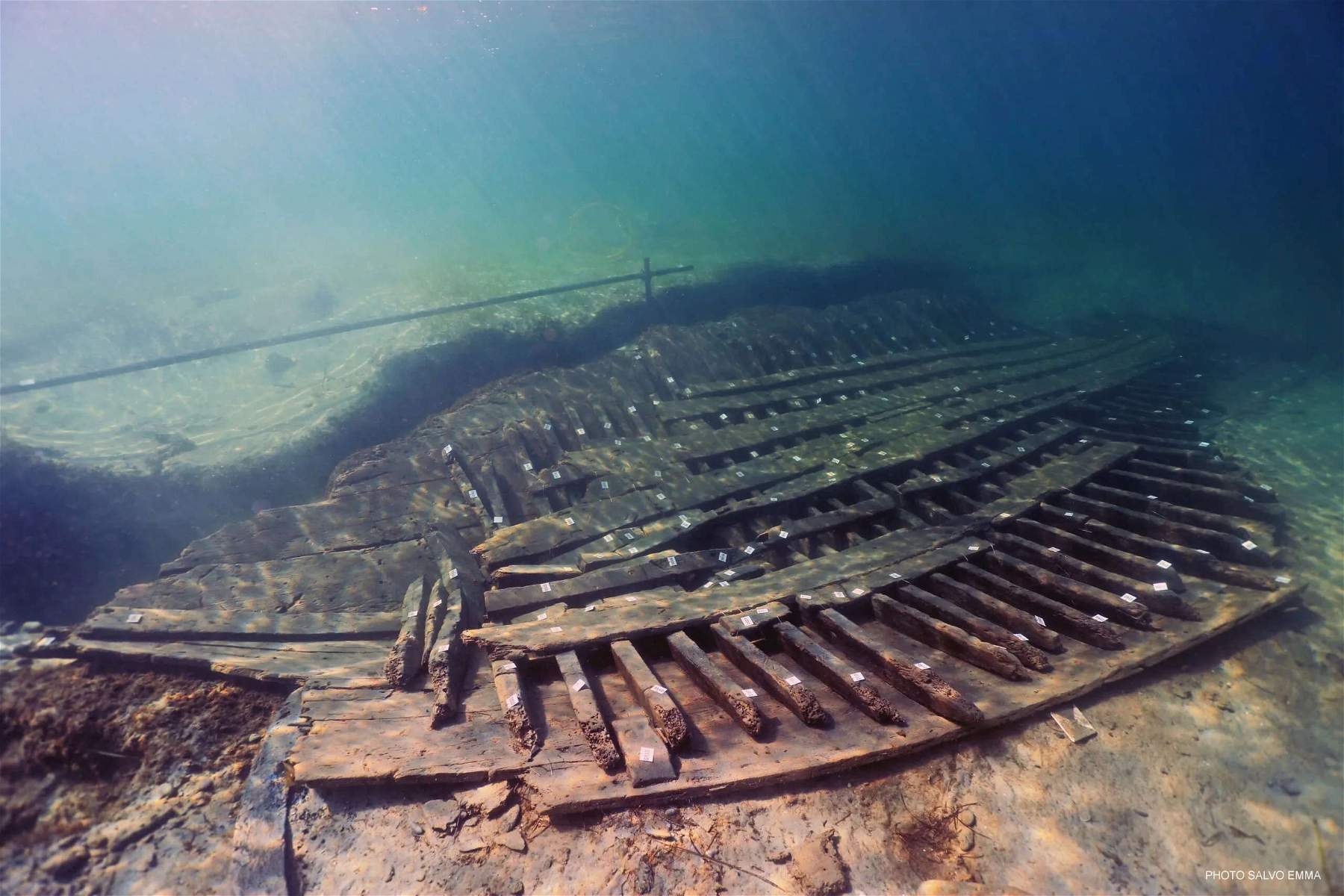Sicily, recovery of the wreck of the Roman ship Marausa 2 completed It will be restored
In Sicily , work has been completed on the recovery of the wreck of an ancient 11-meter-long Roman commercial transport ship, of extraordinary importance for its preservation and contents, found in July 2020 in the sea of the municipality of Misiliscemi, on the Trapani coast near the locality of Marausa, just 100 meters from the shore and only 2 meters deep. Mothia, Lilybaeum and Drepanum, ports of reference in different ages in the Mediterranean routes, thus continue to make us discover elements of the crossroads of maritime traffic of which Sicily was a crossroads, giving us each time finds that amaze for their level of preservation.
The discovery of the wreck in fact, of great archaeological value, immediately set off work to study and assess the feasibility of bringing it back to dry land with an operation carried out thanks to European funding of 500 thousand euros that materialized in July 2023 to conclude in the first days of October by bringing it by sea intact to the port of Marsala (housed within the archaeological area of Lilybaeum, ancient Marsala).
For the operation to transport the Roman ship by sea, the wreck was enclosed in a metal structure, a sort of cage, which allowed it to be lifted from the seabed and floated to allow it to be towed by other ships along the Sicilian coast for 30 km to precisely Marsala. Then, by exceptional road transport, it was transported to the Baglio Anselmi Archaeological Museum in Marsala, where it will be submerged in a tank of fresh water to begin the desalination process, preparatory to subsequent restoration and conservation work. Thanks to the new techniques, therefore, it was not necessary to disassemble the ship, which remained intact.
A very complex operation, therefore, to safeguard the ship, which is datable to the 3rd century AD, from the imperial era with the hull still intact and the cargo of amphorae and other artifacts still intact stored inside. All artifacts were transferred to the Baglio Anselmi Museum in Marsala to undergo initial restoration and conservation work.
“The team of archaeologists and underwater technicians, coordinated by the Superintendence of the Sea of the Sicilian Region,” says the councilor for Cultural Heritage and Sicilian Identity, Francesco Paolo Scarpinato, “designed and directed the entire recovery operation, which represents an event of extraordinary importance. For the first time in Sicily, a complex and delicate operation is being carried out that has allowed for transportation by sea without affecting the original structure of the vessel.”
The Roman ship was named “Marausa 2,” after the first similar discovery in 1999: the hull now brought ashore is believed to be the “twin” of the one already discovered that year in the same place about 500 meters away under a thick blanket of sand and posidonia. At that time, the remains of a large transport ship, 16 meters long and 8 meters wide (making it the largest wreck ever pulled out in our seas), from the late Roman period, were found lying on the bottom, virtually intact (thanks to the natural cover), recovered in an 800-thousand-euro operation in 2011. The wreck (at this point identifiable as Marausa “1”) was displayed in the halls of the Baglio Anselmi museum in Marsala, and the cargo consisted of types of African amphorae closed by corks used for the transport of dried fruits (pine nuts, hazelnuts, almonds, peaches, dried figs), olives and most likely wine and garum (fish sauce).
From the investigations carried out, the “Marausa 2,” could be an oneraria (used to transport goods) ship, from the 4th century AD, of great scientific interest, especially for the naval construction techniques of this particular historical period. The state of preservation, even after 1,700 years, has been described as “astonishing,” and recovery operations, coordinated by the Sicilian Region’s Superintendence of the Sea, were complex and required the use of cutting-edge technology. After an initial phase of excavation and photographic documentation of the site, work began to secure the wreck, which was protected by nets and fabric. Next, a metal structure was erected around the hull, allowing the entire vessel to be raised in a unified manner.
Historians are confident that the findings will further illuminate information about trade between Rome and the North African provinces. The amphorae carried by the ship most likely contained wine, olive oil and other foodstuffs.
On the Marausa 1 it must be said that it represents one of the most important underwater finds in Italy the objects recovered and currently exhibited at the Pepoli Archaeological Museum in Trapani, particularly the ceramics, attest to the wreck’s function as an onerary ship, intended to transport foodstuffs, such as dried fruit, wine and canned fish, contained in amphorae. The co-presence of amphorae, both resin-coated and non-resin-coated, demonstrates the variety of goods transported (dated between the late 3rd and 4th centuries CE and predominantly North African production). The presence of African table and kitchen pottery and the discovery of animal remains for the crew’s feeding constitute important evidence of life on board.
Both ships probably sank while maneuvering into the Birgi River, which at that time was a navigable waterway for several kilometers (the mouth of the river’s natural course was right here until 1961 when for the construction of the Trapani-Birgi airport, the riverbed was moved two kilometers further south).
Pictured is the wreck of the Marausa 2. Photo: Salvo Emma
 |
| Sicily, recovery of the wreck of the Roman ship Marausa 2 completed It will be restored |
Warning: the translation into English of the original Italian article was created using automatic tools. We undertake to review all articles, but we do not guarantee the total absence of inaccuracies in the translation due to the program. You can find the original by clicking on the ITA button. If you find any mistake,please contact us.




























